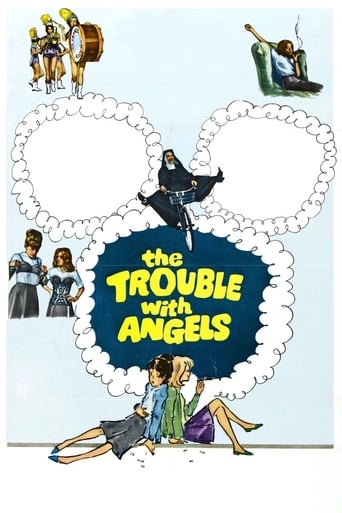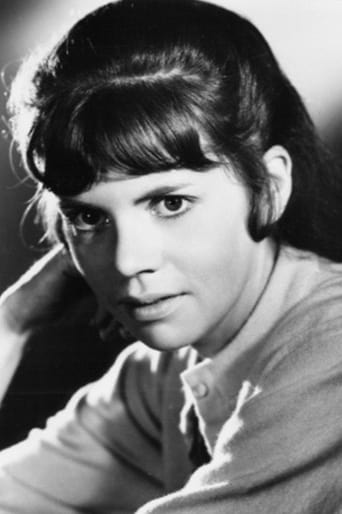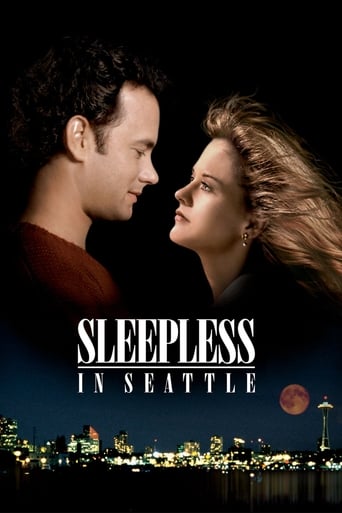

The Trouble with Angels (1966)
Mary and her friend, Rachel, are new students at St. Francis Academy, a boarding school run by the iron fist of Mother Superior. The immature teens grow bored and begin playing pranks on both the unsuspecting nuns and their unpleasant classmates, becoming a constant thorn in Mother Superior's side. However, as the years pass, Mary and Rachel slowly mature and begin to see the nuns in a different light.
Watch Trailer
Cast
Similar titles


Reviews
So much average
Fun premise, good actors, bad writing. This film seemed to have potential at the beginning but it quickly devolves into a trite action film. Ultimately it's very boring.
There's no way I can possibly love it entirely but I just think its ridiculously bad, but enjoyable at the same time.
The movie's neither hopeful in contrived ways, nor hopeless in different contrived ways. Somehow it manages to be wonderful
My family settled down to watch this classic on Thanksgiving eve after our company left. It was the cream on the pie that day! We laughed together and totally relaxed. How wonderful and refreshing to view a movie that treats nuns with respect. A show that demonstrates how teachers can help young students under their care. All done in a very funny and creative way. Rosalind Russell gives a stellar performance here. Haley Mills is great! I am a teacher and this movie shows how even the most stubborn student is affected by good role models. You will laugh and that is good for the soul and heart! We bought two copies of this movie for Christmas and gave them as gifts. Treat yourself and your family to a delightful one of a kind movie. Purchase it and watch once a year!
On the basis of its 1966 publicity, those who viewed the "The Trouble With Angels" (TTWA) must have been expecting a comedy. They got something rather more complex. In fact, most of the comic episodes occur early in the film; thereafter, life gets serious, as the girls visit a home for the aged, learn how one sister was abused by the Nazis, and how another plans to teach in a leper colony. Then the friendliest sister passes away. Thus, the film gradually evolves into a serious portrayal of life in a boarding school (St. Francis Academy), the transition from youth to maturity, and the experiences that can make, or break, friendships. The principal protagonists are guilty of various misdemeanors--smoking, entering the sisters' living quarters, and skipping swimming instruction. But these infractions are primarily a reflection of immaturity, which largely disappears after one year at St. Francis.TTWA follows the relationship of its two principal characters, Mary Clancy (Hayley Mills) and Rachel Devery (June Harding) in their three years at St. Francis Academy. Both were sent there to be straightened out. At first, both react unfavorably to the school, which they see as "medieval," and akin to a girls' reformatory. They view school authorities as "the enemy," and agree that the Mother Superior (Rosalind Russell) is a "fink"--once when her back is turned they honor her with a Fascist salute. But, the girls have their differences, especially in matters of religion. Mary, who has visited the Vatican and seen the Pope, is increasingly receptive to Catholicism and its doctrines. Pretty obviously, Rachel is not a Catholic. Twice, under the Mother Superior's disapproving scrutiny, Rachel is unable to make the sign of the cross. Near the end of her first year at St. Francis, Rachel writes to the head of her former school that she is "a captive in a nunnery." Once, the Mother Superior tells Rachel that she is the "Devil's agent." In their second and third years at St. Francis, the differences between the girls are becoming clearer. When Rachel suggests that Mary stuff a picture of the Pope in the window to keep out the snow, Mary is horrified. Later, Rachel considers it appropriate that Sister Constance should leave the order and rejoin her former lover--a prospect that leaves Mary incredulous. Purely fortuitous happenings serve to confirm the girls' differing attitudes. Mary observes the Mother Superior feeding the birds, comforting an elderly woman, and grieving over Sister Liguori's casket. But Rachel, who hears only the Reverend Mother's impersonal announcement of Liguori's death, wonders aloud, "How can she be so cold?" Predictably, contemporary promotional material emphasized the relationship between Mary and the Mother Superior, who were portrayed by Hayley Mills and Rosalind Russell, the most famous members of the cast. But, as other reviews demonstrate, TTWA can be viewed from various perspectives. It is perhaps most interesting to focus on friendship between Mary and Rachel, viewing them as two distinct, but equally important, personalities. Although it occasionally seems that Rachel is a failure in everything, in some respects, she seems to be more in touch with reality than Mary. It is Rachel who seeks Mary's assurance that the sisters will be away from the cloister during Mary's planned "tour." It is Rachel who expresses concern about skipping swimming lessons. When the girls are smoking in the boiler room, it is Rachel who inquires about the significance of the alarm bell; and, when fire engines arrive, it is Rachel who suggests an effort to locate the fire. As the girls, unable to swim, having avoided swimming lessons for three years, are about to dive into the pool for the mandatory life saving test, it is Rachel who asks, "What do you think we ought to do?" Rachel, in posing such practical questions, is playing Sancho Panza to Mary's Don Quixote. Mary's "leadership" has done nothing but get Rachel in trouble. It is a testimony to friendship or loyalty that Rachel continues to follow Mary--and Rachel expects the same loyalty in return. When she learns that Mary plans to become a nun, Rachel is stunned by what she regards as Mary's act of betrayal. In retrospect, Mary's decision, and Rachel's response are not surprising. And TTWA, having morphed from a comedy into an interesting cinematic essay about friendship, concludes in a dramatic final scene in which Rachel struggles with conflicting emotions and ultimately chooses reconciliation.Equally talented in comedy and drama (and herself a product of a Catholic school), Rosalind Russell was well cast as the Mother Superior. The role of Mary did not capitalize on Hayley Mills's talents. And, for perhaps the first time in her career, Mills is not the center of sympathetic attention. Instead, that attention focuses on Rachel, whose shortcomings and vulnerabilities are manifest. June Harding was certainly not the obvious choice for the part of Rachel. She was too old (she turned 28 during the filming), and had almost no experience in comedy. Seeming to confirm her unsuitability for this role, she showed up at an early interview looking more like a Manhattan model than an adolescent schoolgirl. But director Ida Lupino immediately saw something in Harding--perhaps Harding was like Rachel--and lobbied executives to give her this role. Mills and Harding were a sort of cinematic odd couple. Mills was a scion of a prominent English theatrical family, who had already been in 10 films, usually as the star. Harding on the other hand, was the daughter of a wholesale meat packer in a tiny southern Virginia town, making her only major film. Nonetheless, they worked well together; and Harding delivered a convincing performance as Mary's rather naïve and impressionable understudy--although she was nine years older than Mills. From her letters, one gets the feeling that Harding was having more fun than anyone else on the set, and it shows. Also contributing to the success of TTWA are Lupino's unobtrusive but effective direction, and Jerry Goldsmith's music.
During the first half of the sixties Hayley Mills was perhaps the most successful teenage actress in Hollywood, appearing in a series of family comedies for Walt Disney. "The Trouble with Angels" was the first movie she made after her contract with Disney came to an end in 1965, and although Hayley was now twenty years old she was still cast as a teenage schoolgirl. The film is set in an all-girls Catholic boarding school run by an order of nuns. Hayley plays the rebellious Mary Clancy who with her best friend Rachel Devery gets into all sorts of scrapes and becomes the bane of the Mother Superior's life. Although Hayley's own schooldays were now at an end, she was still young enough to be convincing as a teenager. Not so June Harding, who plays Rachel and was actually twenty-six at the time, three years older than Camilla Sparv, who plays one of the nuns, Sister Constance. Unlike Mills, who is her usual irrepressible self, Harding gives a wooden performance.Although the movie was made in the sixties, the heyday of protest and youthful rebellion, the misdemeanours of the two girls are very minor-league stuff. The general atmosphere is similar to that of those old boarding school novels from the thirties by the likes of Enid Blyton and Angela Brazil; all that is missing is a midnight feast with lashings of ginger beer. I kept hoping that Mary and Rachel would do something really daring, like taking drugs, sneaking boys back into their dormitory, going on a protest march calling for the Pill to be distributed free, having a lesbian affair or spiking the nuns' coffee with LSD, but their minor acts of rebellion never get much further than bilking off swimming lessons by feigning illness or sneaking off for a quick cigarette. The scene in which Mary substitutes soap powder for the nuns' sugar is about as much fun as it gets. Hayley Mills obviously wanted to keep her clean-cut image intact, although that image was to be damaged in her next film, "Sky West and Crooked", in which she plays a simple-minded girl who gets involved with an older man, and to be blown out of the water in the film after that, "The Family Way", in which she appeared nude.For most of its length "The Trouble with Angels" is a rather dull comedy about naughty schoolgirls, but it tries to become more serious at the end when Mary, rather improbably, decides that she too will become a nun. Mary seems to have been impressed by Sister Constance who is leaving the school to teach in a leper colony in the Philippines, and by the Mother Superior's own life history- she gave up a successful career as a fashion designer to become a nun- but there has been little in what has gone before to suggest that Mary might have a religious vocation, and this ending comes as something of a surprise. If the film-makers had wanted to make a film about a girl who becomes a nun- a sort of junior version of "The Nun's Story"- they would have done better to concentrate more on her spiritual development from the start. As it is, I was left with the impression that they simply tacked this unlikely ending onto this feeble comedy just to reassure Catholic cinema-goers that their faith was not being lampooned. 4/10
I always like good comedies and when a comedy story has just the right amount and kind of drama added in somewhere appropriate, the result is flawlessness.Hayley Mills gives a wonderful performance in this film from her "post-Disney" era. THE TROUBLE WITH ANGELS is a fun film without any kind of immediate "plot", about the friendship of two girls, one headstrong and deeply rebellious, the other a somewhat dizzy tagalong, and how their pranks torment the Reverend Mother (Rosalind Russell) for 4 years in a catholic girls' school.You don't get to know many of the classmates of Mary (Mills) and her pal Rachel (June Harding), but there are interesting characters in the nuns Sister Constance, Sister Elizabeth, Sister Prudence, Sister Clarissa, Sister Celestine, and of course Sister Ligouri and Reverend Mother. Rosalind Russell does a perfect performance, and I find her voice very strong and distinctive.Each moment, each scene, is a story in itself. Even scenes with no dialogue, such as the one where Mary looks out the window at Christmas to see Reverend Mother walking in the snow to one of the statue saints, is saying something to you. This film is great to me because even though there are "scathingly brilliant" comedy scenes involving cigars, bubble bath crystals and plaster of Paris, there are quiet moments where you are just studying the characters and how their lives are changing and how their perspectives are too. The heartfelt drama is always at the right moments, and gives this film the genre of comedy-drama, rather than silly slapstick. This world, as seen through the eyes of Mary Clancy, and also of Reverend Mother, is a world you might want to visit for a couple of hours. It might be too "slow" or "mellow" a film for some, but for me, it was a wonderful surprise!










